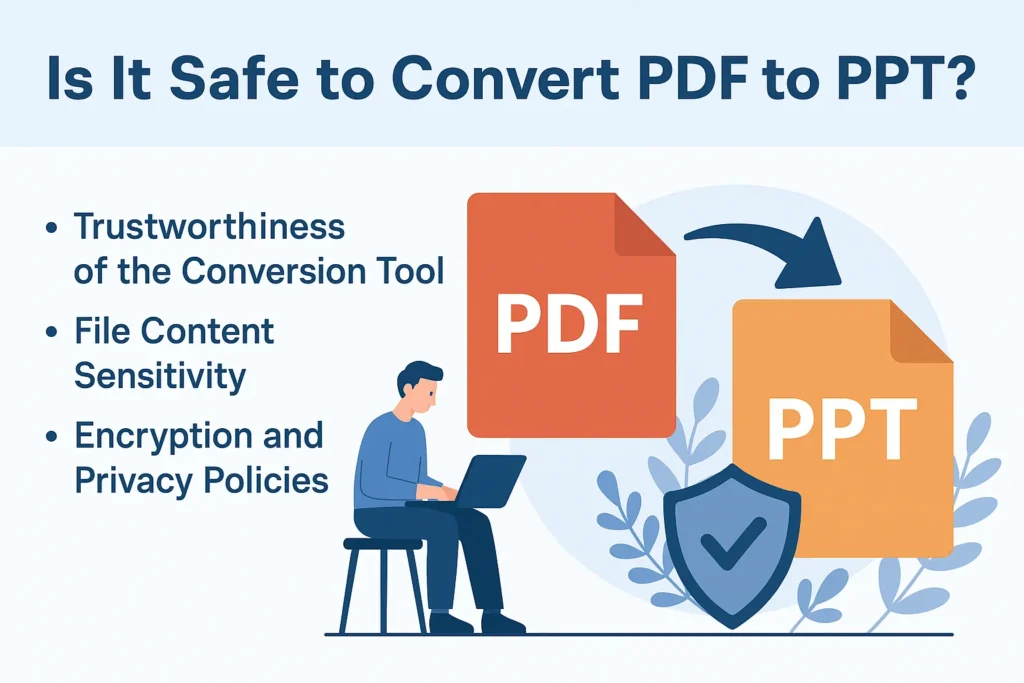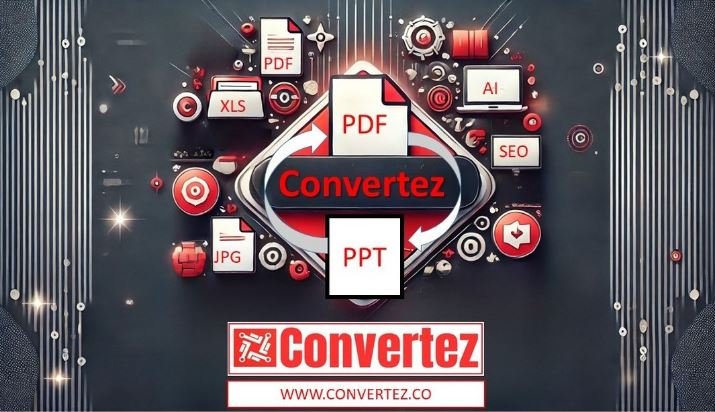In today’s digital world, the ability to easily convert file formats has become essential for students, professionals, and businesses alike. Among the many popular file conversions, one common question often arises: Is PDF to PPT conversion safe?
Whether you’re preparing for an important presentation or just repurposing old documents, ensuring the safety of your Is PDF to PPT Conversion Safe — and your personal data — is critical. In this blog post, we’ll explore everything you need to know about the safety of converting PDFs to PowerPoint presentations (PPT), common risks involved, and how to protect yourself.
Why Convert PDF to PPT?
Before diving into safety concerns, it’s helpful to understand why people frequently convert PDFs to PPTs:
- Editable Format: Unlike PDFs, which are typically static, PPT files are highly editable. You can rearrange text, insert images, or add animations.
- Better Presentation: PowerPoint presentations are visually more engaging, making them ideal for meetings, pitches, or educational purposes.
- Time-Saving: Instead of copying and pasting content manually, a converter automates the process and saves time.
Given these benefits, it’s no surprise that PDF to PPT converters are widely used across different industries.

Is It Safe to Convert PDF to PPT?
The short answer is: It depends.
Is PDF to PPT Conversion Safe, but it also depends on how and where you do it. Here are some factors that affect the safety of the conversion process:
1. Trustworthiness of the Conversion Tool
Not all PDF to PPT converters are created equal. There are three main types:
- Online converters: Websites where you upload your PDF and download the PPT file.
- Offline software: Applications you install on your computer.
- Built-in features: Some programs like Adobe Acrobat offer direct PDF to PPT conversions.
When using an Is PDF to PPT Conversion Safe you’re uploading your file to an external server. If the website is not reputable, your file — along with any sensitive information inside — could be stored, misused, or even leaked.
On the other hand, trusted tools with strong privacy policies (like Adobe, Smallpdf, or Convertez) are generally safe.
2. File Content Sensitivity
Another aspect to consider is what you are converting.
If the Is PDF to PPT Conversion Safe contains confidential information (e.g., client data, financial statements, proprietary research), you must be more cautious. Even a reputable service could become a target for hackers.
For highly sensitive documents, it’s often safer to use offline converters that don’t require internet access.
3. Encryption and Privacy Policies
Good conversion services typically:
- Use HTTPS encryption to secure data during upload/download.
- Delete files automatically after a short period (often within an hour).
- Provide clear privacy policies explaining how your files are handled.
Before uploading anything, always check the converter’s privacy policy. If they mention retaining files for “internal research” or “data analysis,” think twice.

Common Risks When Converting PDF to PPT
While many people Is PDF to PPT Conversion Safe without a second thought, it’s important to be aware of these common risks:
1. Data Breaches
If you use a shady or insecure platform, your document could be intercepted during upload or download, leading to data breaches.
2. Malware or Viruses
Some fake converters are designed to inject malware into the file you download. This can harm your computer or even compromise your entire network.
3. Unauthorized File Retention
Some online services may store copies of your uploaded files without your consent, putting your privacy at risk.
4. Intellectual Property Theft
If you’re converting important documents like research papers, product designs, or business strategies, they could potentially be stolen if you use an unreliable service.
How to Ensure Safe PDF to PPT Conversion
Thankfully, you can easily protect yourself by following a few simple practices:
1. Choose Reputable Conversion Tools
Stick with popular, trusted tools that have excellent user reviews and clear privacy policies. Some safe examples include:
- Adobe Acrobat
- Smallpdf
- iLovePDF
- Convertez.co
These platforms prioritize security and usually delete files automatically after a session.
2. Use Offline Converters for Sensitive Documents
For highly confidential files, use an offline software that does not require internet connectivity. This way, your data never leaves your computer.
3. Check for HTTPS
Always make sure the website URL starts with https://. The “s” stands for secure, meaning the data transmitted between you and the server is encrypted.
4. Read the Privacy Policy
Don’t skip this step. A trustworthy service will clearly state:
- How long they keep uploaded files.
- Whether they share data with third parties.
- Their commitment to deleting files after processing.
If the policy is vague or missing, it’s better to look elsewhere.
5. Scan Downloaded Files
After downloading the converted PPT file, scan it with reliable antivirus software before opening. This extra step helps catch any potential malware.
Conclusion: Is PDF to PPT Conversion Safe?
Yes, PDF to PPT conversion can be safe — if you take the right precautions.
Always prioritize security over convenience. Choose reputable tools, especially for sensitive documents, and never ignore basic signs of website security like HTTPS. If you’re dealing with highly confidential information, offline converters are your best bet.
By being mindful and selective, you can Is PDF to PPT Conversion Safe enjoy the many benefits of Is PDF to PPT Conversion Safe into stunning PowerPoint presentations without risking your privacy or security.

